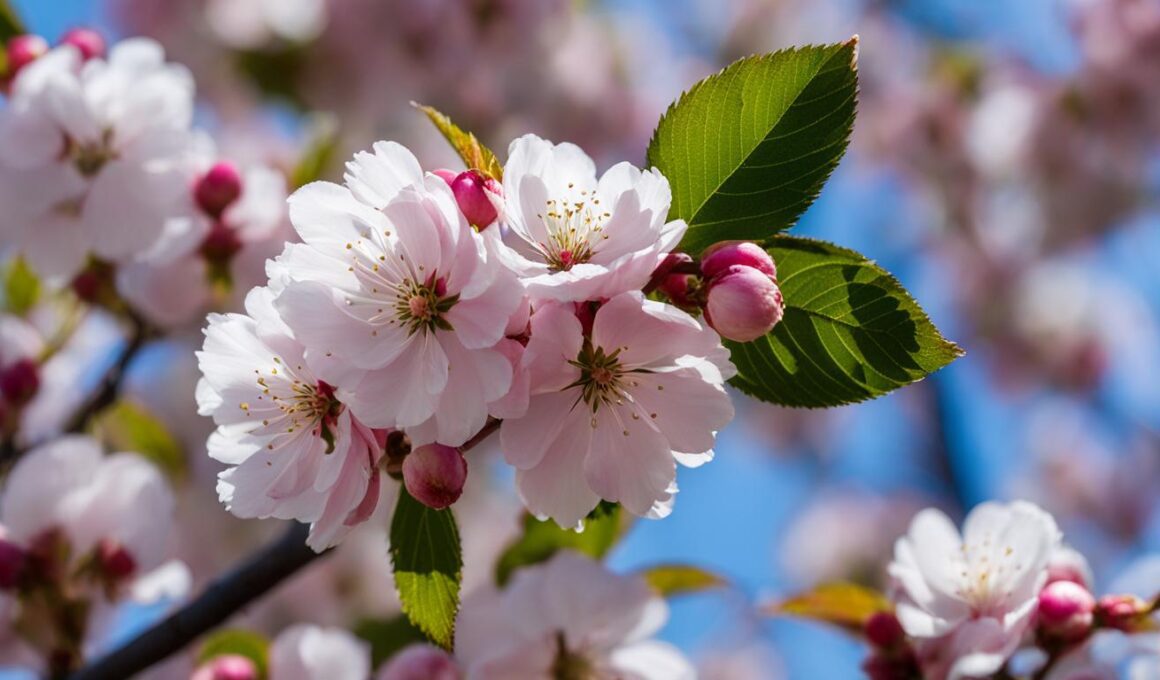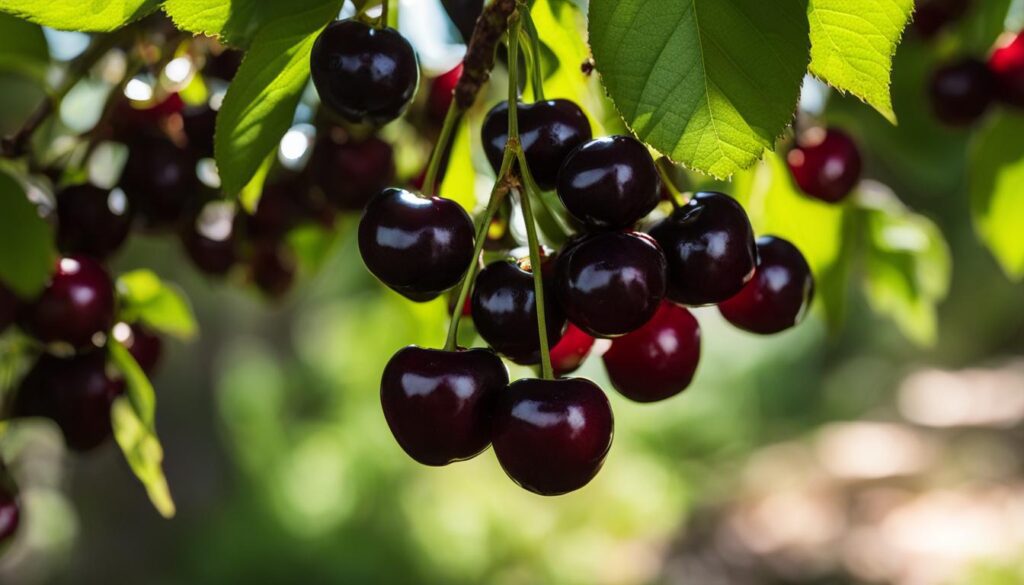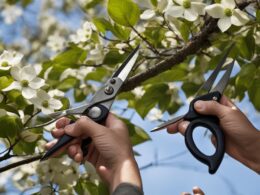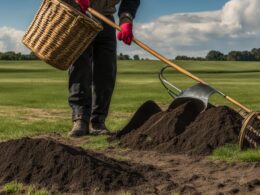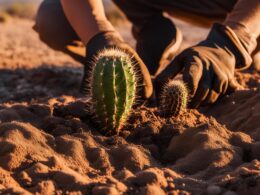Welcome to the vibrant world of cherry trees in Texas! If you’re looking to add a burst of natural beauty to your landscape, cherry trees are the perfect choice. These fast-growing trees are known for their stunning blooms and are sure to catch your eye. Texas provides an excellent environment for cherry trees to thrive, with its diverse soils and ample sunshine.
When it comes to caring for cherry trees, it’s essential to understand their specific needs. From proper planting techniques to ongoing maintenance, taking care of these trees will ensure their continued health and abundant blooms.
One of the key factors in successful cherry tree care is choosing the right variety for your climate. Texas offers a range of options, and selecting a variety that is well-suited to the local conditions is crucial. By providing the ideal environment, you can help your cherry trees flourish and produce those beautiful blooms year after year.
Stay tuned for our upcoming sections, where we will dive deeper into the characteristics of cherry trees, their uses in furniture crafting, and the best practices for growing and caring for these delightful trees. We will also highlight the cherry blossom festivals taking place across the United States, where you can witness the breathtaking beauty of these trees in full bloom.
So, get ready to embrace the beauty of cherry trees in Texas and learn everything you need to know about their care and cultivation. Let’s create a stunning landscape together!
Characteristics and Uses of Cherry Trees
Black cherry trees, specifically Prunus serotina subsp. serotina, are classified as medium to large trees, reaching heights of up to 110 ft. with a spread of 90 ft. They belong to the Rosaceae family.
The trees prefer sun exposure and produce white racemes of flowers in spring. The fruits, small clusters of pea-sized purple-black to red-black cherries, are an important food source for wildlife.
Besides being aesthetically pleasing, cherry wood is highly valued in furniture and panel crafting due to its quality. It is worth noting that other species, such as Escarpment black cherry and southwestern black cherry, exist in specific regions within Texas.
Growing and Caring for Cherry Trees in Texas
When it comes to planting cherry trees in Texas, it’s important to choose varieties that thrive in the local climate. While there are self-pollinating cherry tree varieties available, planting multiple trees for cross-pollination is recommended to enhance fruit production. Some popular varieties known for their beauty and disease resistance include Okame, Kwanzan, Autumn, and Yoshino, which offer a range of delicate white to pink flowers. If you’re specifically looking for fruit-producing trees, cherry species can be divided into sweet cherries (wild cherries) and sour cherries.
The ideal hardiness zone for growing cherry trees in Texas is between 4-9, with some bush cherries even surviving in zone 3. To ensure optimal growth, these trees require well-drained soil with a pH balance ranging from 6.0 to 6.8. Good air circulation is crucial, and long-term frost exposure should be avoided. Pruning plays a significant role in caring for cherry trees, as they are fast-growing. To make cherry picking easier, it’s recommended to prune trees or head them at around 30-40 inches above the ground.
The open-center system is commonly employed when training cherry trees, focusing on developing a strong framework of branches capable of supporting heavy fruit loads. Proper pruning not only helps with fruit production but also promotes better air circulation and reduces the risk of disease. Taking care of your cherry trees will reward you with bountiful harvests and healthy, vibrant trees.
Cherry blossom festivals are a delightful way to celebrate the beauty of cherry trees. One such event is the International Cherry Blossom Festival in Macon, Georgia, which showcases the gorgeous blooms each spring. Another popular festival is The National Cherry Blossom Festival in Washington, D.C., drawing visitors from around the country to witness the cherry blossoms in full bloom. Attending these festivities provides a unique opportunity to immerse yourself in the enchanting world of cherry trees.
In the next section, we’ll conclude our exploration of cherry trees by summarizing their care requirements and the beauty they bring to the Texas landscape.
Conclusion
Cherry trees can transform the Texas landscape into a haven of beauty, with their captivating blooms and fruitful harvests. By taking proper care of these trees, you can enhance the aesthetic appeal of your surroundings, provide a source of food for wildlife, and even indulge in the delightful taste of freshly picked cherries.
When choosing cherry tree varieties for your climate, ensure they are well-suited to the Texas weather. Create an ideal growing environment by cultivating well-drained soil with the appropriate pH balance. Remember that cross-pollination is crucial for abundant fruit production, so consider planting multiple trees to facilitate this process.
Regular maintenance and pruning are essential to keep your cherry trees healthy and productive. By following proper pruning techniques, you can maintain a strong framework of branches that can support the weight of the fruit. Don’t miss the opportunity to witness the enchanting beauty of cherry tree blooms at cherry blossom festivals across the United States. These festivals offer a delightful experience that further showcases the splendor of these trees.
So, why not add a touch of natural elegance and vibrant colors to your Texas garden? Planting cherry trees is a rewarding endeavor that brings forth not only the charm of the cherry blooms but also the bountiful harvest of cherries themselves. Embrace the grace and abundance that cherry trees offer, and enjoy the joys they bring to your landscape.
Can Sprouted Onions be Planted in Texas Cherry Tree Gardens?
Yes, planting a sprouted onion article about how to plant sprouted onions in Texas Cherry Tree gardens would be beneficial for gardeners. The climate in Texas is suitable for growing onions, and with the right care, sprouted onions can be planted and grow successfully in cherry tree gardens.





